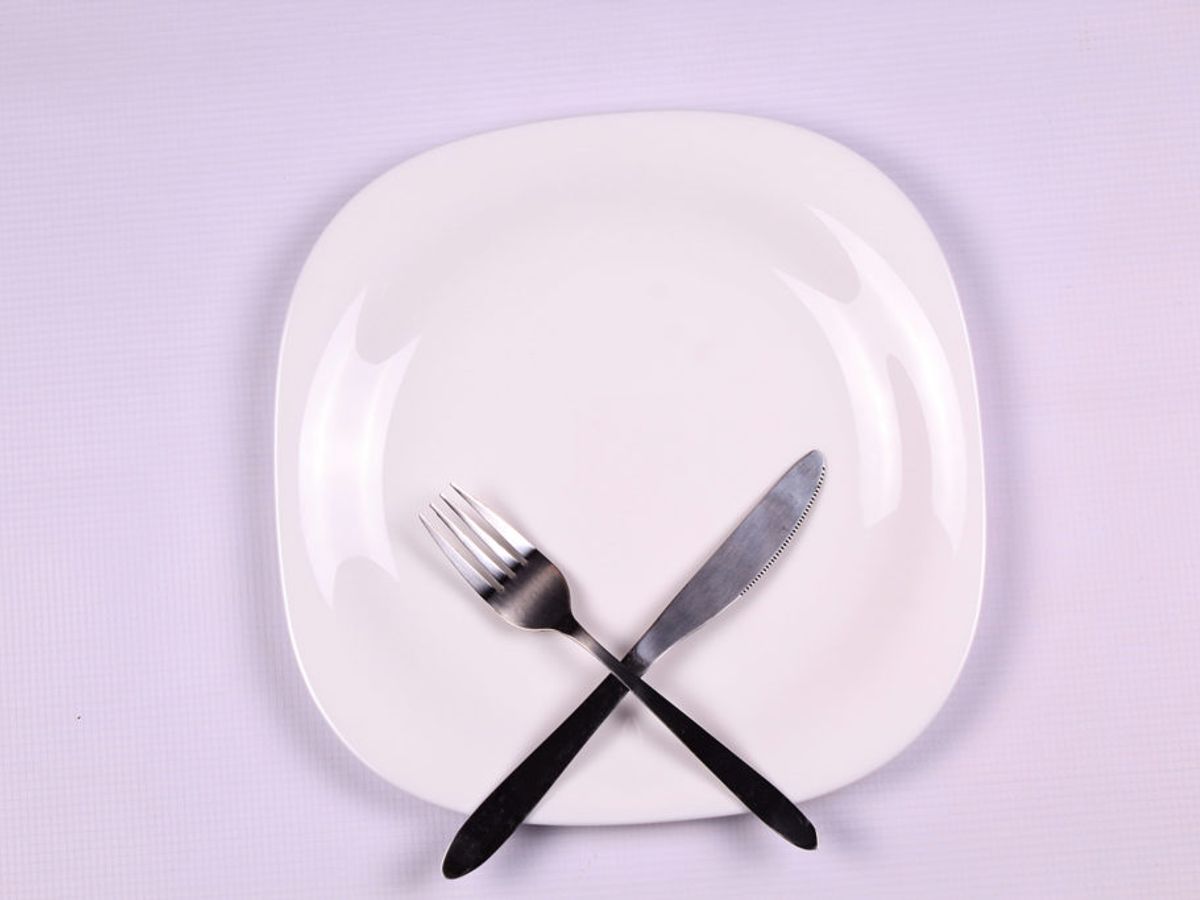Intermittent fasting has gained significant popularity as a weight loss strategy in recent years. The concept involves alternating periods of eating and fasting, which is believed to help in reducing calorie intake and improving metabolic health. But does it really work for weight loss? This article delves into the various aspects of intermittent fasting, exploring its methods, scientific backing, benefits, potential drawbacks, and real-life success stories.
Key Takeaways
- Intermittent fasting involves alternating periods of eating and fasting, which can help reduce calorie intake and promote weight loss.
- There are several methods of intermittent fasting, including the 16/8 method, the 5:2 diet, and alternate-day fasting.
- Scientific studies suggest that intermittent fasting can lead to weight loss by affecting caloric restriction, hormonal changes, and metabolism.
- Beyond weight loss, intermittent fasting may offer additional health benefits such as improved insulin sensitivity, heart health, and brain function.
- While intermittent fasting can be effective, it is essential to consider potential drawbacks and consult with a healthcare provider before starting any new diet regimen.
What is Intermittent Fasting and How Does It Work?

Intermittent fasting is an eating plan that switches between fasting and eating on a regular schedule. Unlike many diets that focus on what to eat, intermittent fasting is all about when you eat. The idea is to prolong the period when your body has burned through the calories consumed during your last meal and begins burning fat.
The Basics of Intermittent Fasting
At its core, intermittent fasting involves choosing regular time periods to eat and fast. For example, you might eat only during an eight-hour period each day and fast for the remaining 16 hours. Another approach is to eat only one meal a day, two days a week. The key is to find a schedule that fits your lifestyle and stick to it.
Different Types of Intermittent Fasting
There are several popular methods of intermittent fasting, including:
- The 16/8 Method: Eat during an 8-hour window and fast for 16 hours.
- The 5:2 Diet: Eat normally for five days a week and restrict calories to 500-600 on the other two days.
- Alternate-Day Fasting: Alternate between days of normal eating and days of fasting or very low-calorie intake.
How It Affects Your Body
Intermittent fasting works by extending the period when your body has burned through the calories consumed during your last meal and begins burning fat. This can lead to weight loss and improved health markers like blood pressure and cholesterol levels. It’s also believed to improve insulin sensitivity and may even help in preventing or reversing certain diseases.
Remember, while intermittent fasting can be an effective tool for weight loss, it’s important to consult with a healthcare provider before starting any new diet regimen, especially if you have underlying health conditions.
Popular Intermittent Fasting Methods

When it comes to intermittent fasting, there are several popular methods that people swear by. Each method has its unique approach and benefits, so it’s all about finding what works best for you. Here are the most common ones:
The 16/8 Method
This is probably the most popular intermittent fasting method. You fast for 16 hours and eat all your meals within an 8-hour window. For example, you might skip breakfast and eat between 12 PM and 8 PM. It’s straightforward and easy to stick to, making it a favorite for many.
The 5:2 Diet
In this method, you eat normally for five days of the week and restrict your calorie intake to about 500-600 calories on the other two days. It’s a flexible approach that allows you to enjoy your regular diet most of the time while still reaping the benefits of intermittent fasting.
Alternate-Day Fasting
As the name suggests, you alternate between days of normal eating and days of fasting. On fasting days, you either don’t eat at all or consume a very small amount of calories, usually less than 500. This method can be challenging but is effective for those who can stick to it.
Remember, the key to success with any intermittent fasting method is consistency and listening to your body. Find a method that fits your lifestyle and stick with it for the best results.
The Science Behind Intermittent Fasting for Weight Loss
Caloric Restriction and Weight Loss
Intermittent fasting is often a weight loss intervention. Fasting for short periods helps people eat fewer calories, which may result in weight loss over time. This often results in a calorie deficit and hormonal changes that can help people lose weight. The weight loss achieved through time-restricted eating is likely different than the cellular adaptations that happen with more prolonged fully fasted states.
Hormonal Changes
Intermittent fasting can lead to significant hormonal changes that aid in weight loss. For instance, fasting can lower insulin levels, which helps the body access stored fat for energy. Additionally, fasting can increase levels of norepinephrine, a hormone that boosts metabolism and promotes fat burning. These hormonal shifts are crucial for effective weight management.
Impact on Metabolism
One of the highlights of intermittent fasting is its impact on metabolism. Contrary to the myth that fasting slows down your metabolism, short-term fasting can actually boost it. This is because fasting increases the production of norepinephrine, which enhances metabolic rate. However, it’s essential to note that prolonged fasting without proper nutrition can lead to muscle loss and other health issues.
Remember, while intermittent fasting can be an effective weight loss strategy, it’s not just about eating less; it’s about eating right and maintaining a balanced diet.
Benefits Beyond Weight Loss

Intermittent fasting isn’t just about shedding pounds; it offers a range of other health benefits that can improve your overall well-being. Let’s dive into some of these perks.
Improved Insulin Sensitivity
One of the most significant benefits of intermittent fasting is its ability to improve insulin sensitivity. This means your body becomes more efficient at managing blood sugar levels, which can be particularly beneficial for those at risk of type 2 diabetes.
Heart Health
Intermittent fasting can also have a positive impact on your heart health. Studies have shown that it can help reduce risk factors like high blood pressure, cholesterol levels, and triglycerides. These changes can lead to a lower risk of heart disease over time.
Brain Function
Believe it or not, intermittent fasting can also boost your brain function. It promotes the production of brain-derived neurotrophic factor (BDNF), a protein that supports brain health. This can lead to improved cognitive function and may even help protect against neurodegenerative diseases.
The journey to weight loss is as much about mental transformation as it is about physical changes.
Potential Drawbacks and Risks
Intermittent fasting has been shown to help with weight loss and improve some markers of health. However, it’s not all sunshine and rainbows. Here are some potential drawbacks and risks you should be aware of.
Nutritional Deficiencies
One downside of intermittent fasting is the risk of nutritional deficiencies. When you limit your eating window, you might not get all the essential nutrients your body needs. This is especially true if you’re not careful about what you eat during your eating periods. It’s crucial to focus on nutrient-dense foods to avoid deficiencies.
Impact on Mental Health
Intermittent fasting can also have an impact on your mental health. For some people, the strict eating windows can lead to feelings of deprivation and anxiety around food. This can be particularly challenging for those with a history of eating disorders. It’s important to listen to your body and consult a healthcare provider if you experience any negative mental health effects.
Who Should Avoid It
Not everyone should jump on the intermittent fasting bandwagon. Certain groups of people should avoid it altogether, including:
- Pregnant or breastfeeding women
- Individuals with a history of eating disorders
- Those with certain medical conditions like diabetes or heart disease
Always consult with a healthcare professional before starting any new diet regimen to ensure it’s safe for you.
While intermittent fasting has its benefits, it’s essential to weigh these potential pitfalls before diving in. Make sure to do your research and consult with a healthcare provider to determine if it’s the right choice for you.
Combining Intermittent Fasting with Other Diets
Keto and Intermittent Fasting
Combining the Keto diet with intermittent fasting can be a powerful strategy for weight loss. The Keto diet focuses on high-fat, low-carb meals, which can help you stay full longer. When you pair this with intermittent fasting, your body can enter a state of ketosis more quickly, burning fat for fuel. I found that this combination helped me manage my hunger better and stay energized throughout the day.
Paleo and Intermittent Fasting
The Paleo diet emphasizes whole foods like lean meats, fruits, and vegetables, avoiding processed foods and sugars. When you combine this with intermittent fasting, you can enhance the benefits of both approaches. I noticed that sticking to a Paleo diet during my eating windows made it easier to maintain a healthy weight and improve my overall well-being.
Vegan Diet and Intermittent Fasting
Intermittent fasting can also be effectively combined with a vegan diet. A vegan diet focuses on plant-based foods, which are often lower in calories but high in nutrients. By aligning your eating windows with a vegan diet, you can ensure you’re getting the necessary nutrients while still promoting weight loss. I found that this combination helped me feel lighter and more energetic.
Remember, the key to success with any diet is consistency and listening to your body. Combining intermittent fasting with other diets can offer a variety of benefits, but it’s essential to find what works best for you.
Intermittent Fasting Tips for Beginners
Starting intermittent fasting can be a bit daunting, but with the right approach, it can become a seamless part of your lifestyle. Here are some tips to help you get started on the right foot.
Starting Slow
When you’re new to intermittent fasting, it’s crucial to start slow. Jumping straight into a strict fasting regimen can be overwhelming and hard to maintain. Begin with a more manageable fasting window, like 12 hours of fasting and 12 hours of eating, and gradually increase the fasting period as your body adjusts.
Staying Hydrated
One of the most important aspects of intermittent fasting is staying hydrated. Drinking plenty of water helps curb hunger and keeps your body functioning optimally. You can also include other non-caloric beverages like herbal teas and black coffee to keep things interesting.
Listening to Your Body
It’s essential to listen to your body during your intermittent fasting journey. If you feel dizzy, extremely hungry, or fatigued, it might be a sign that you need to adjust your fasting window or the types of foods you’re eating during your eating periods. Remember, the goal is to find a balance that works for you and supports your health and well-being.
Remember, the first rule of every diet is to drink lots of water. Staying hydrated helps enhance the effectiveness of your fasting routine and keeps you feeling full.
Common Myths About Intermittent Fasting
Myth: You Can Eat Anything
No, it’s not. Skipping the first meal of the day just gives your body more time to burn stored energy. As you start to get hungry later in the morning, make sure to choose nutritious foods. Intermittent fasting isn’t a free pass to eat junk food. You still need to focus on a balanced diet to see the best results.
Myth: It Slows Down Your Metabolism
Actually, intermittent fasting can have the opposite effect. Short-term fasting can boost your metabolism by increasing levels of norepinephrine, a hormone that helps burn fat. So, don’t worry about your metabolism slowing down; it’s more about how you manage your eating windows.
Myth: It’s Only for Weight Loss
While weight loss is a significant benefit, intermittent fasting offers more. It can improve insulin sensitivity, reduce inflammation, and even enhance brain function. So, it’s not just about shedding pounds; it’s about overall health improvement.
Remember, intermittent fasting is not a one-size-fits-all solution. It’s essential to listen to your body and adjust your eating patterns accordingly.
Success Stories: Real People, Real Results
Weight Loss Journeys
I’ve come across numerous inspiring stories of people who have achieved their weight loss goals through intermittent fasting. One standout story is about a mom of three who successfully lost 35 pounds after trying numerous weight loss methods. Her journey wasn’t easy, but intermittent fasting provided the structure and flexibility she needed to make lasting changes.
Health Improvements
Beyond weight loss, many people have reported significant health improvements. For instance, some have experienced better insulin sensitivity and lower blood pressure. These changes often come as a pleasant surprise, reinforcing the benefits of intermittent fasting beyond just shedding pounds.
Tips from Successful Intermittent Fasters
Here are some tips from those who have found success with intermittent fasting:
- Start Slow: Don’t jump into a strict fasting schedule right away. Gradually increase your fasting window to allow your body to adjust.
- Stay Hydrated: Drinking plenty of water is crucial. It helps curb hunger and keeps you feeling full.
- Listen to Your Body: Pay attention to how your body responds. If you feel unwell, it might be a sign to adjust your fasting schedule.
The journey to weight loss is as much about mental transformation as it is about physical changes.
By focusing on these aspects, many have found intermittent fasting to be a sustainable and effective approach to weight loss.
Intermittent Fasting and Exercise

Best Workouts to Pair with Fasting
When it comes to intermittent fasting, choosing the right workouts can make a big difference. I find that low-intensity exercises like walking, yoga, and light cycling are great during fasting periods. These activities help you stay active without draining your energy reserves. On the other hand, high-intensity interval training (HIIT) and strength training are best done during your eating windows when you have more energy to burn.
Timing Your Exercise
Timing is everything when combining intermittent fasting and exercise. I usually schedule my workouts to align with my eating windows. For example, if I’m following the 16/8 method, I prefer to exercise towards the end of my fasting period or right after I break my fast. This way, I can refuel my body with nutrients immediately after working out, which helps in muscle recovery and growth.
Staying Energized
Staying energized while fasting and exercising can be challenging, but it’s doable. I make sure to stay hydrated by drinking plenty of water and sometimes adding electrolytes to my drinks. Listening to your body is crucial; if you feel too fatigued, it’s okay to take a rest day. Remember, the goal is to find a balance that works for you and keeps you motivated on your weight loss journey.
Exercise is key for effective weight loss. Finding the right balance between fasting and physical activity can help you achieve your goals more efficiently.
Conclusion
So, does intermittent fasting really work for weight loss? The answer seems to be a resounding yes, but with some caveats. It’s not a magic bullet, and its effectiveness can vary from person to person. The key is to find a fasting schedule that fits your lifestyle and to combine it with a balanced diet and regular exercise. While some people may see quick results, others might need more time to notice significant changes. Always consult with a healthcare provider before starting any new diet regimen, especially if you have underlying health conditions. At the end of the day, intermittent fasting can be a powerful tool in your weight loss arsenal, but it’s just one piece of the puzzle. Happy fasting!
Frequently Asked Questions
What is intermittent fasting?
Intermittent fasting is a dietary regimen that cycles between periods of fasting and eating. It focuses on when you eat rather than what you eat.
How does intermittent fasting help with weight loss?
Intermittent fasting helps with weight loss by reducing the eating window, which can lead to a lower calorie intake. It also affects hormones that regulate metabolism and appetite.
What are the different types of intermittent fasting?
Common types of intermittent fasting include the 16/8 method, the 5:2 diet, and alternate-day fasting. Each method varies in the length and frequency of fasting periods.
Can I drink water during the fasting period?
Yes, you can drink water, as well as other non-caloric beverages like black coffee and tea, during the fasting period. Staying hydrated is important.
Is intermittent fasting safe for everyone?
Intermittent fasting is not suitable for everyone. It is not recommended for pregnant or breastfeeding women, individuals with eating disorders, or those with certain medical conditions. Always consult with a healthcare provider before starting.
Will intermittent fasting slow down my metabolism?
No, intermittent fasting does not slow down your metabolism. Short-term fasting can actually boost your metabolic rate by increasing levels of norepinephrine, a hormone that aids in fat burning.
Can I exercise while intermittent fasting?
Yes, you can exercise while intermittent fasting. However, it’s important to listen to your body and adjust the intensity and timing of workouts to ensure you have enough energy.
What should I eat during the eating periods?
During the eating periods, focus on nutrient-dense foods like lean proteins, whole grains, fruits, vegetables, and healthy fats. Avoid overeating and try to maintain a balanced diet.
- Sustainable Weight Loss Strategies: Achieving Long-Term Success – June 16, 2024
- Cycling for Weight Loss: Pedal Your Way to a Healthier You – June 15, 2024
- Weight Loss Coaching: Personalized Guidance for Effective Results – June 15, 2024




